Overview
The first quarter of 2025 has made one thing clear: construction marketing is no longer just about printed flyers and trade stand chats. From AI-driven search changes to short-form video dominance, the industry is evolving, and brands that want to stay competitive need to stay informed.
Here's your Q1 digital marketing breakdown: what's changing, why it matters, and the key takeaways to guide your strategy into Q2 and beyond.
Search is Getting Smarter – and More Competitive
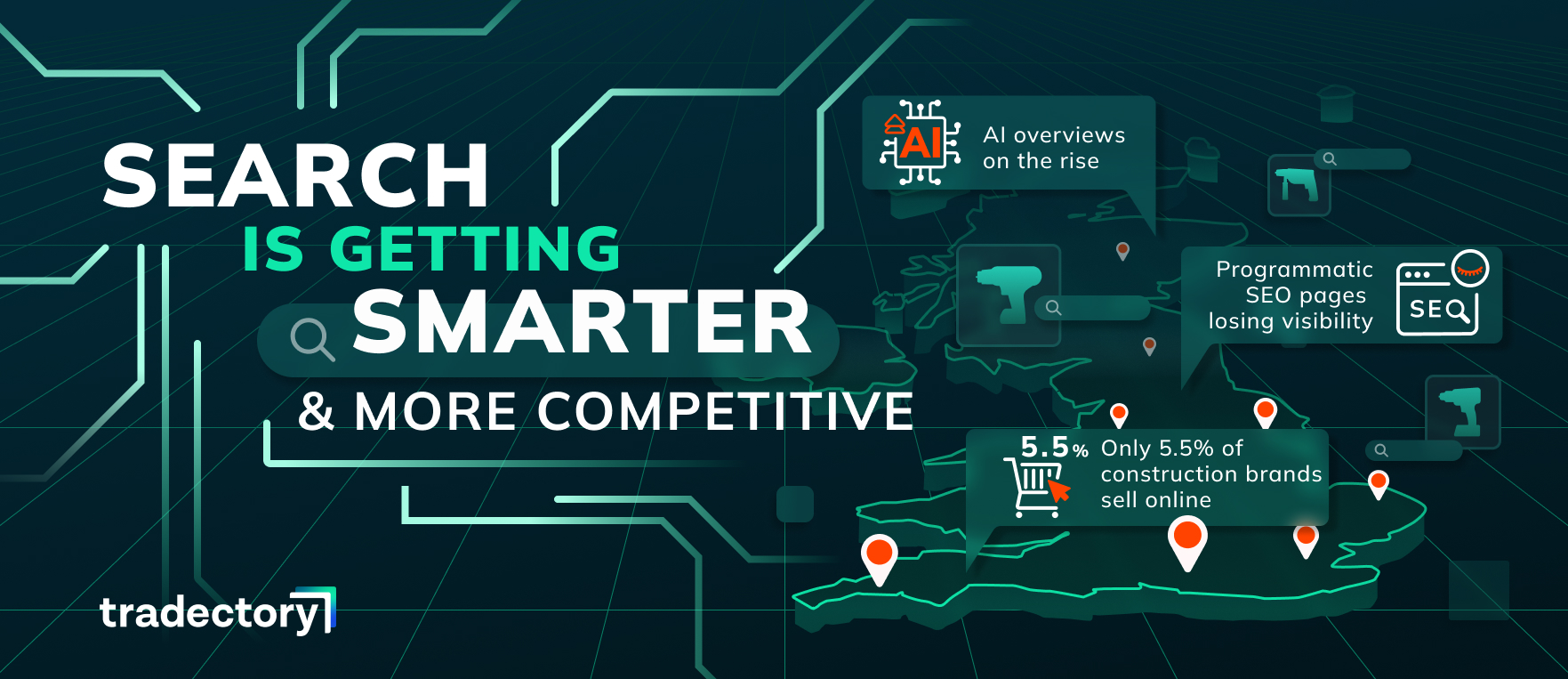
Google's core algorithm update in March sent shockwaves across the search landscape. Forum content is being re-evaluated, while sites relying heavily on programmatic SEO pages, especially those that prioritise bots over users, are seeing visibility losses.
AI Overviews are also on the rise. These zero-click results provide answers directly on the search results page, which means users are spending less time visiting individual websites. And with "People Also Ask" dominating more SERP real estate, competition for organic traffic is tighter than ever.
On the e-commerce side, there's a growing gap to close. ONS data shows that construction sector online sales have increased by £1.6 billion in the past decade, but only 5.5% of construction businesses are selling online, compared to 28.6% across all UK industries. Huge opportunity? Absolutely.
What It Means:
Buyers are searching smarter and faster. If your pages aren't answering questions clearly or appearing in featured snippets, you risk becoming invisible in the SERPs. Likewise, construction brands have significant untapped potential in the e-commerce space.
Actionable Takeaways:
- Re-optimise landing pages for featured snippets using FAQ schema and intent-matching content.
- Create targeted content by sector (e.g., housebuilders, contractors) or location.
- Run branded and competitor PPC campaigns to defend and expand your share of search.
Competitive Paid Ads: Getting More from ROAS
In today's digital landscape, paid media is no longer just about who spends the most; it's about who spends the smartest. With Google Ads and Meta raising platform costs, return on ad spend (ROAS) is the metric that matters.
Advanced ROAS tracking, especially when linked directly to revenue data, allows you to identify exactly what's working, optimise the full funnel, and justify every marketing pound.
What It Means:
ROAS optimisation isn't just about adjusting bids. It's about aligning every touchpoint, from ad creative to on-site experience to generating quality conversions.
Actionable Takeaways:
- Tie ad performance to actual sales and revenue, not just clicks or impressions.
- Test new formats (e.g., video, carousels) and ad placements to uncover untapped ROAS potential.
- Reinvest in campaigns with the highest conversion efficiency and pause the underperformers fast.
Short-Form Video Dominates Engagement

The scroll-stopping power of short-form video shows no signs of slowing. Platforms like TikTok, Instagram Reels, and YouTube Shorts continue to favour quick, highly engaging content that drives real results.
Recent stats back this up:
- 73% of consumers prefer short-form videos to learn about a product or service.
- These videos generate 2.5x more engagement than long-form alternatives.
What It Means:
Construction brands need to get creative - fast. Whether it's time-lapse builds, tool reviews, or behind-the-scenes site shots, your audience wants bite-sized, visual storytelling.
Actionable Takeaways:
- Use short-form content to showcase products, team culture, or project wins.
- Include subtitles and hooks in the first 3 seconds to boost watch time.
- Repurpose existing content into snackable clips to maximise reach.
Meta's Andromeda AI: Smarter Ad Personalisation
Meta's new machine learning system, Andromeda AI, is built to revolutionise ad targeting. With the power of NVIDIA Grace Hopper Superchips and Meta's MTIA architecture, it boasts a 10,000x increase in computing power and is already delivering promising results:
- 22% uplift in ROI
- 8% improvement in ad quality across user segments
What It Means:
More precise targeting, better ad relevance, and greater efficiency. If you're using Meta ads, expect improvements, but make sure your creative and messaging are tailored to maximise the benefits.
Actionable Takeaways:
- Test ad creatives with multiple variants to let AI find top performers.
- Review audience segmentation regularly to ensure alignment with platform updates.
- Monitor ROAS and quality metrics weekly. Andromeda is evolving fast.
Google Ads Expands Negative Keywords for PMax
Google Ads has increased the negative keyword limit for Performance Max campaigns from 100 to 10,000 per campaign, giving advertisers far more control over where ads appear.
What It Means:
This update helps eliminate wasted ad spend and ensures ads show up in more relevant searches. But more control also means more responsibility- keyword strategies need to be intentional, not just bloated.
Actionable Takeaways:
- Build out comprehensive negative keyword lists tailored to irrelevant search intent.
- Review and refine these lists monthly to prevent overlap or exclusions that hurt performance.
- Use Google's search terms report to spot and filter out low-quality matches.
Meta Launches GA4 Integration
Meta now offers native integration with Google Analytics 4, allowing for more seamless tracking between the two platforms.
What It Means:
No more mismatched data between platforms. This update offers more consistent event tracking, accurate conversion insights, and a clearer view of multi-platform journeys.
Actionable Takeaways:
- Activate the GA4 integration from your Meta Business Suite.
- Align naming conventions for events and goals to ensure consistency across reports.
- Monitor GA4 reports to track ad performance and attribute conversions more accurately.
Final Thoughts: What Q1 Taught Us
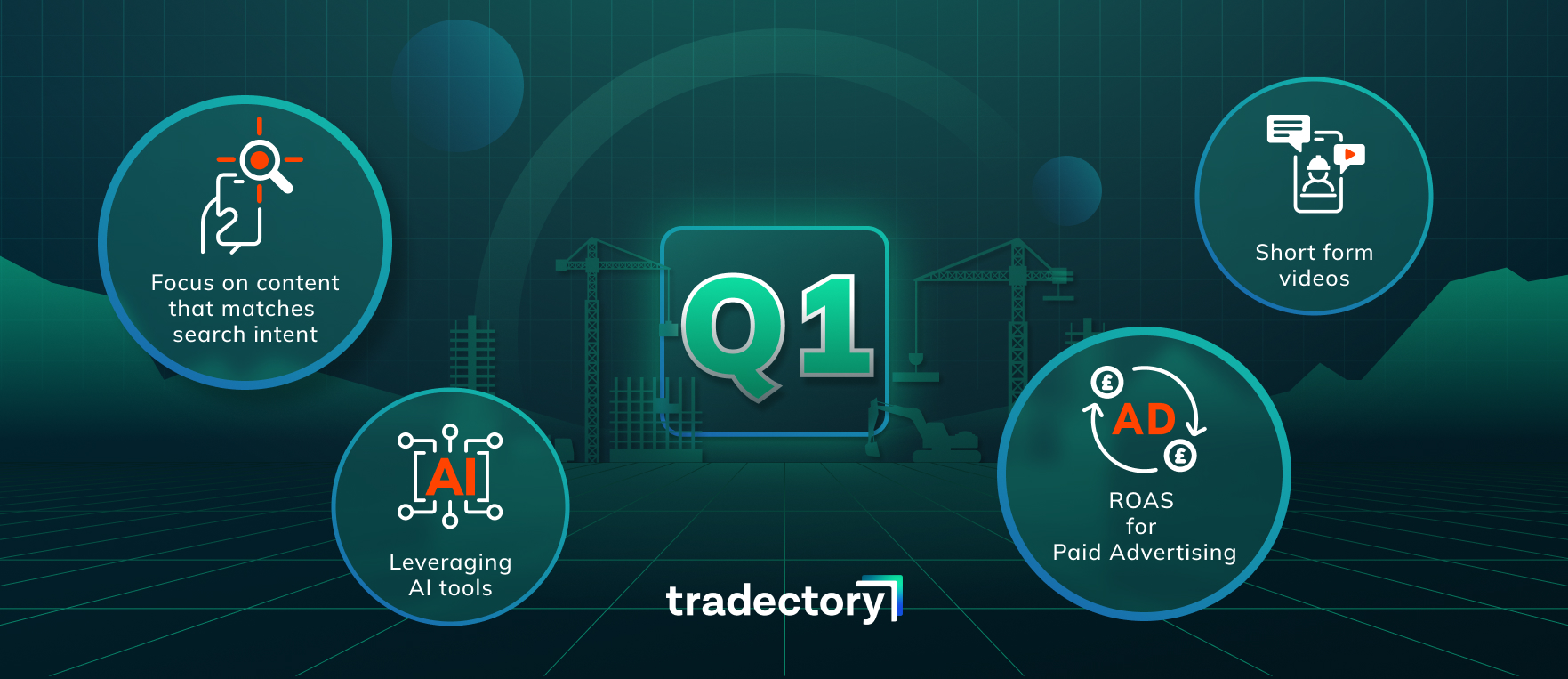
Digital marketing in construction is rapidly moving toward precision, automation, and meaningful measurement. Whether you're a product supplier, contractor, or service provider, Q1 2025 has shown that staying agile with your strategy is the only way to stay ahead.
Key Takeaways Recap:
- Double down on content that serves search intent.
- Embrace short-form videos as part of your content mix.
- Track ROAS and conversion paths closely—especially on paid platforms.
- Leverage new AI tools, but ensure your fundamentals (creative, tracking, messaging) are strong.
Need Help Navigating Your 2025 Construction Marketing Strategy?
Whether you're looking to boost your SEO visibility, refine your content game, or launch Google Ads campaigns that speak to your buyers, we're here to help. Get in touch with our construction marketing specialists today at Tradectory!
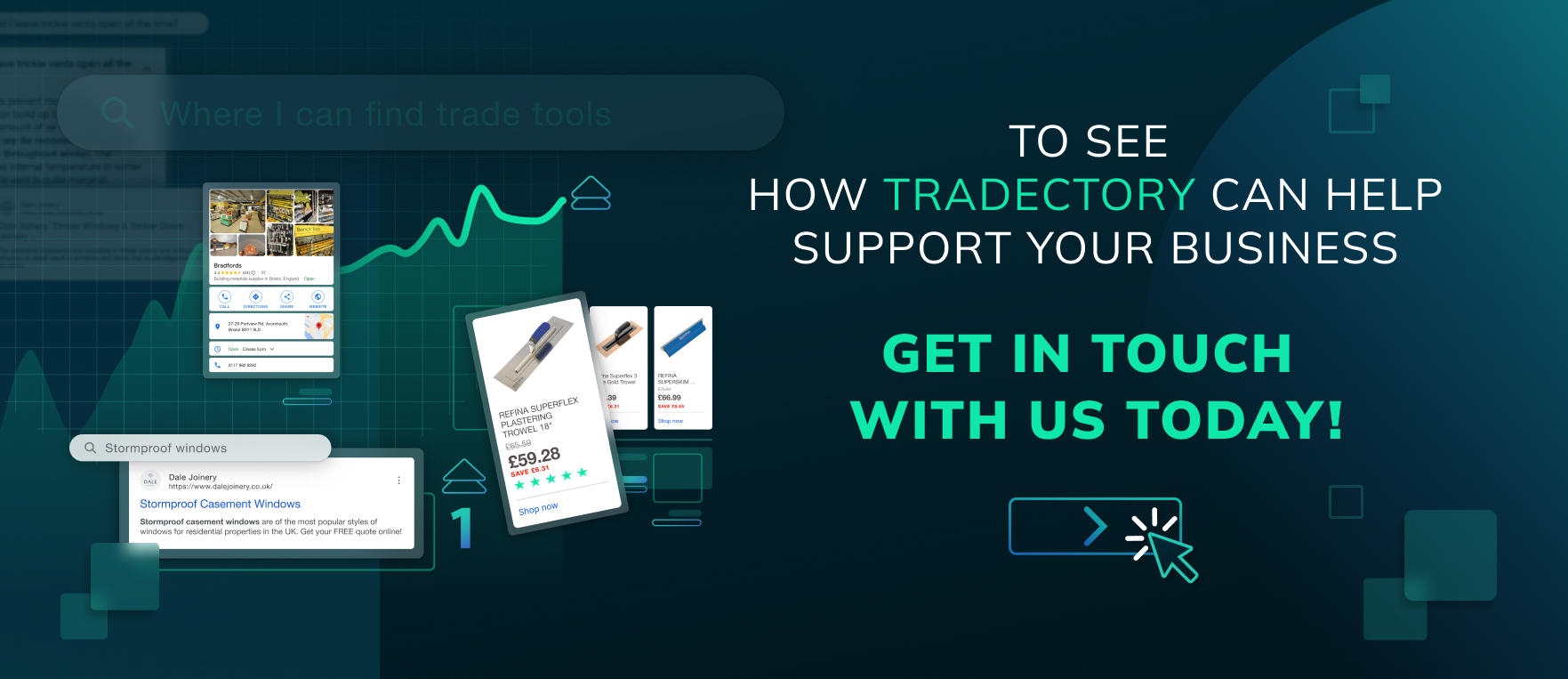
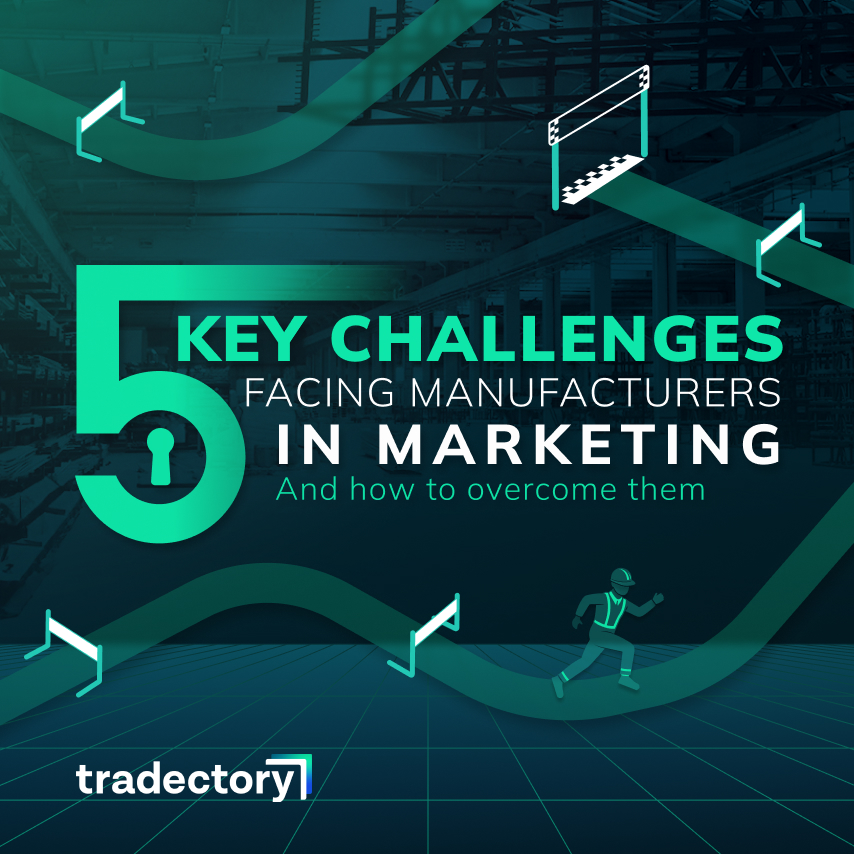
5 Key Challenges Facing Manufacturers in Marketing (And How To Overcome Them)
Are you facing any of these challenges when it comes to construction manufacturer marketing? Here’s how to solve them.
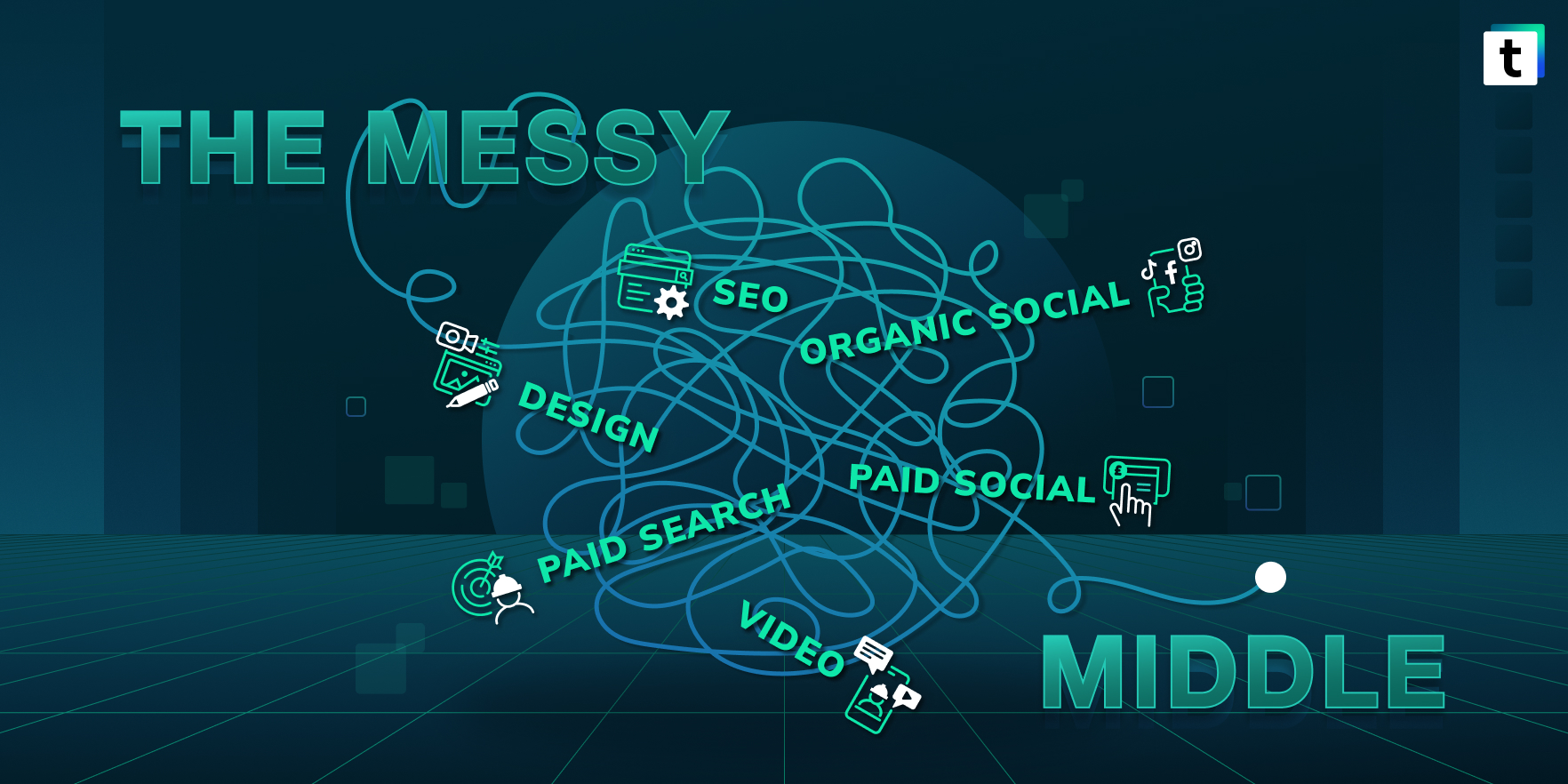
The Messy Middle: A Strategic Approach to Multi-Channel Marketing
Discover how to navigate the ‘Messy Middle’ of multi-channel marketing with a strategic approach that maximises engagement, boosts conversions, and streamlines the customer journey.

Understanding The Basics of Paid Media: A Beginners Guide for The Construction Industry
Discover the fundamentals of paid media tailored for the construction industry. Explore the distinctions between paid, owned, and earned media, and identify the best paid media channels for your needs.




